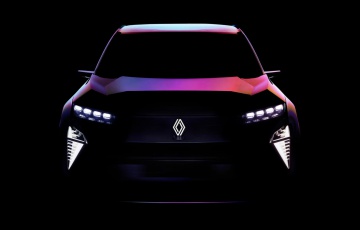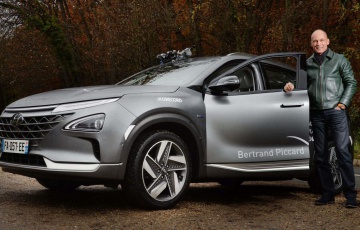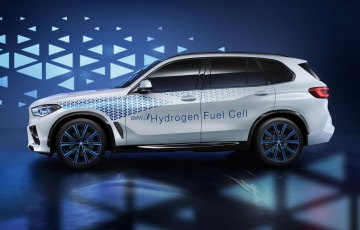Boffins have found a way to make cheaper hydrogen fuel cells






Boffins have found a way to make cheaper hydrogen fuel cells
Platinum. It’s rare, expensive and vital to fuel cells. Or at least it was, if a few rather clever sorts from Imperial College London are to be believed.
Apparently, they’ve figured out a way to use iron as the catalyst in hydrogen powered cars instead of platinum, reducing the cost of fuel cells dramatically and ensuring that fuel cell manufacturers won’t be chewing through a scarce and precious metal, should this hydrogen thing ever take off. It’s still unclear whether it will, but it’s never a bad thing seeing big improvements to a potential clean power source.
What platinum does in a fuel cell is about as tricky as you’d expect, but the gist is that tiny particles of platinum in a special polymer help the hydrogen molecules split into protons and electrons. The electrons are the electrical supply for the motor; the protons are mixed with oxygen from the air (using more platinum) to create pure water. How it does that exactly is beyond our scientific understanding but it’s been a pretty vital part of fuel cells to this point.
However, the eggheads at Imperial College found that using nitrogen, carbon and individual atoms of iron had broadly the same catalytic effect as a platinum catalyst, due to the fact that a single atom of iron has different properties than when it’s bonded together with iron atoms.
Now, there’s a whole heap more to it, but as that whole heap includes phrases like “preforming a carbon–nitrogen matrix using a sacrificial metal (Zn) in the initial synthesis step and then exchanging iron into this preformed matrix” and “single-atom Fe–N4 sites, as identified by 57Fe cryogenic Mössbauer spectroscopy” we decided to get out while our brain was still unscrambled and look for something we could understand.
Helpfully, Professor Anthony Kucernak, from Imperial College’s Department of Chemistry, said something that’s easy to understand. “Around 60 per cent of the cost of a single fuel cell is the platinum for the catalyst,” he said. “To make fuel cells a real viable alternative to fossil-fuel-powered vehicles, for example, we need to bring that cost down.” And even mopes like us can understand that using nitrogen and iron instead of platinum should make for much cheaper fuel cells in the future.
Thoughts on the future of hydrogen fuel cells, folks?
TEXT Craig Jamieson









